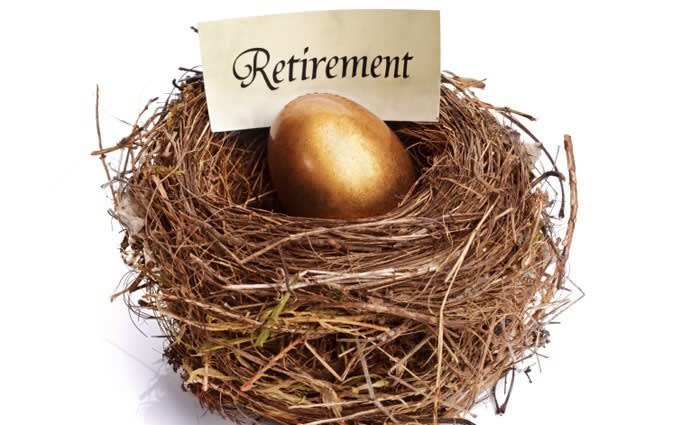The future of the super system and how your SMSF will fare
An ageing population, distrust in the super system and a dependency on foreign debt will put significant strain on Australia’s retirement income system over the next 40 years and will potentially leave Aussies without enough super to retire on, according to a panel of industry experts that included David Murray, the head of the Financial System Inquiry (FSI).
Murray told a breakfast in Melbourne the superannuation system needed clearer objectives in the coming years.
"We need to make sure the objective of the system is clear. If it’s not, and we don’t make some improvement, we will increasingly have to ask the question: Would we have been better off without this system?” said Murray.
“It’s not clear that we’ve made an overwhelming strong start in the superannuation system. There are a lot of people that start at 3% that won’t have adequate outcomes in retirement.”
The panel, which was hosted by the Self Managed Super Fund Association, also included former Keating government advisor Don Russell, economist and former Reserve Bank board member Warwick McKibbin, and SMSF Association chief Andrea Slattery.
Ageing population
McKibbin, an economic modeller, argued while Australia’s ageing population was not facing as much pressure as some countries, such as Japan and certain areas in Europe, we are still at the mercy of an increasing rate of old age dependency.
“Demographics is always destiny,” said McKibbin, who pointed to research showing while world economies would continue to grow, work participation rates will conversely decline.
“Just from demographics alone, we can see there will be a fundamental slowdown in the world economy,” he says.
“The people who are working can’t support the number of old age people.”
Superannuant apathy
Russell, who was one of the architects of compulsory superannuation system, argued the public is becoming increasingly apathetic about super, and the superannuation industry was guilty of not having done enough to convince people to lock away their money for 40 years.
“Unless we can continue to convince people it’s a good deal to have their money locked, people will start saying, ‘I’ll have my money now’,” said Russell.
He said the failure of the industry to speak with one voice had discredited it in the eyes of many people and had strengthened criticism of compulsory super.
Foreign reliance
Murray, the former chief of the Commonwealth Bank, used the analogy of Australia as a bank customer to illustrate our reliance on foreign debt, saying the country could be classed as “a prolific borrower”.
He said while the country is generally “a style of borrower that does prefer to pay their debts”, it was now at risk of the consequences of irresponsible budgetary management.
“Well, what [does Australia] do when things are crook? Generally they have managed the budget fairly responsibly. Well we’ve reached a point where we don’t anymore,” said Murray.
Russell agreed Australia was too reliant upon other economies and was at risk of “being run over” if it slowed down reform to the super system.
“The US is of such a size, if it sits in the middle of the road, everyone goes round it. If Australia stops in the middle of the road, it gets run over. It’s not an option for us to be stopping,” he said.
SMSF sector
Meanwhile, the two-day conference also canvassed the condition of the self-managed super fund sector, with Slattery saying a growing number of people were “taking responsibility” for their super in the face of the challenges on the system.
In her keynote address, Slattery said recent reports, including the FSI, had given the SMSF sector “a clean bill of health”.
“We all know the figures. Of $1.85 trillion invested in superannuation at 30 June 2014, $560 billion is in SMSFs,” said Slattery.
“That’s 31% of all superannuation funds, with SMSFs now representing the majority of those that are self-sufficient in their retirement with 93% of members drawing income streams in the retirement phase.”
Slattery also pointed to “sobering” statistics that show approximately 84% of Australians are currently retiring on $21,000 or less a year through APRA-regulated funds.
SMSF investors making growth a priority
While concerns remain clear for the superannuation system as a whole, the conference also drew attention to research showing “green shoots” for SMSF investments.
The SMSF Investor Product Needs Report released on Tuesday shows trustees are now swinging away from cautious investments and are beginning to make growth a priority.
“For the past few years, the pendulum has been on the fear side; it was moving back towards optimism, but a lot of caution has emerged in 2014,” said the report.
The survey of 2681 investors with an SMSF, which examines investment trends in the six-year period from 2009 to 2014, says SMSF investors are in a period of “cautious optimism”, and while maximizing income remains important, trustees are focusing more on growth.
Slattery said in a statement the study “put to bed” the myths that SMSF investors don’t like making decisions, are apathetic, and basically sit on large cash reserves.
“As the report says, SMSF investors tend to lead the general investor population in investing behaviour and, as such, it’s critical to watch what they are doing,” she said.
This article first appeared on SmartCompany.
